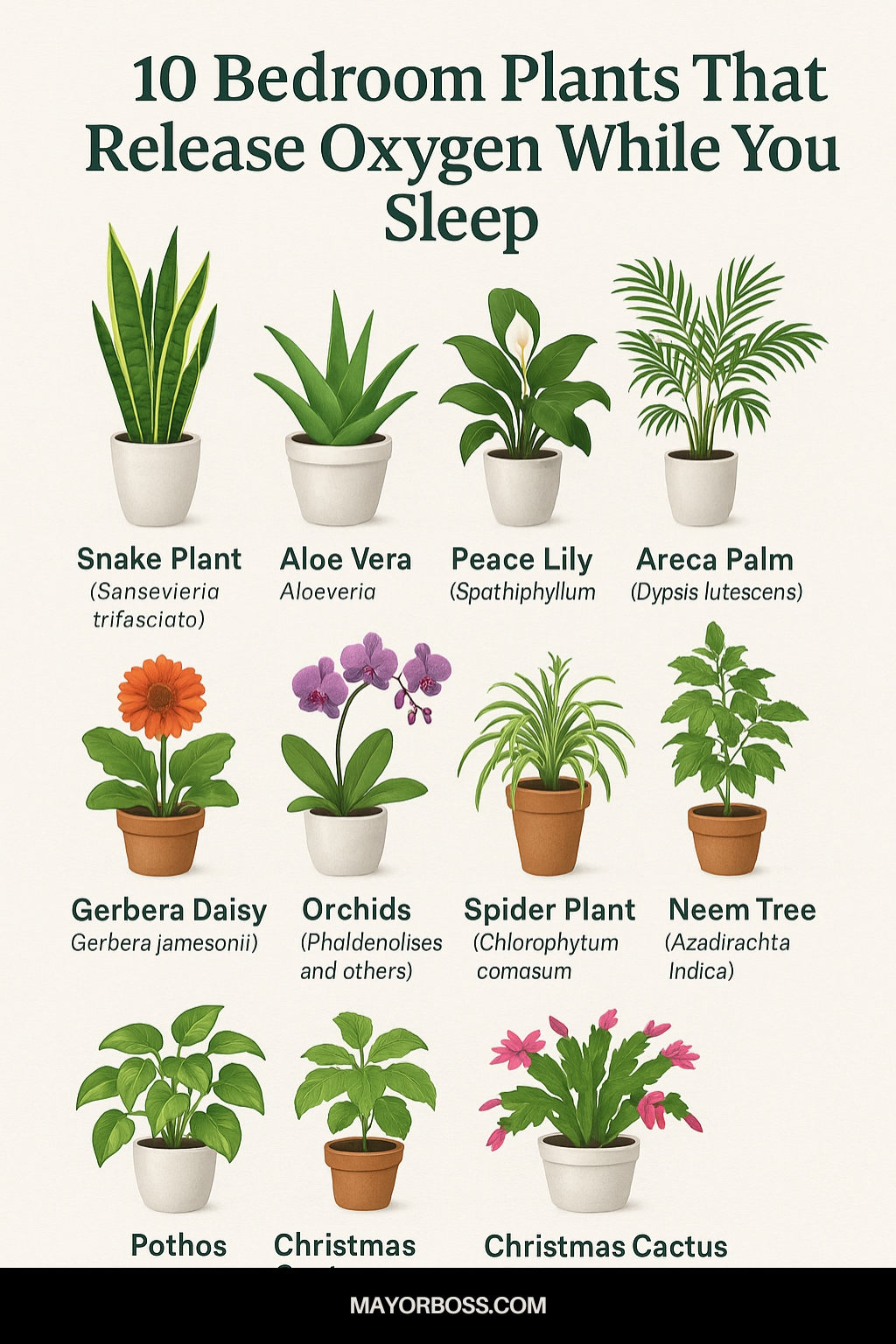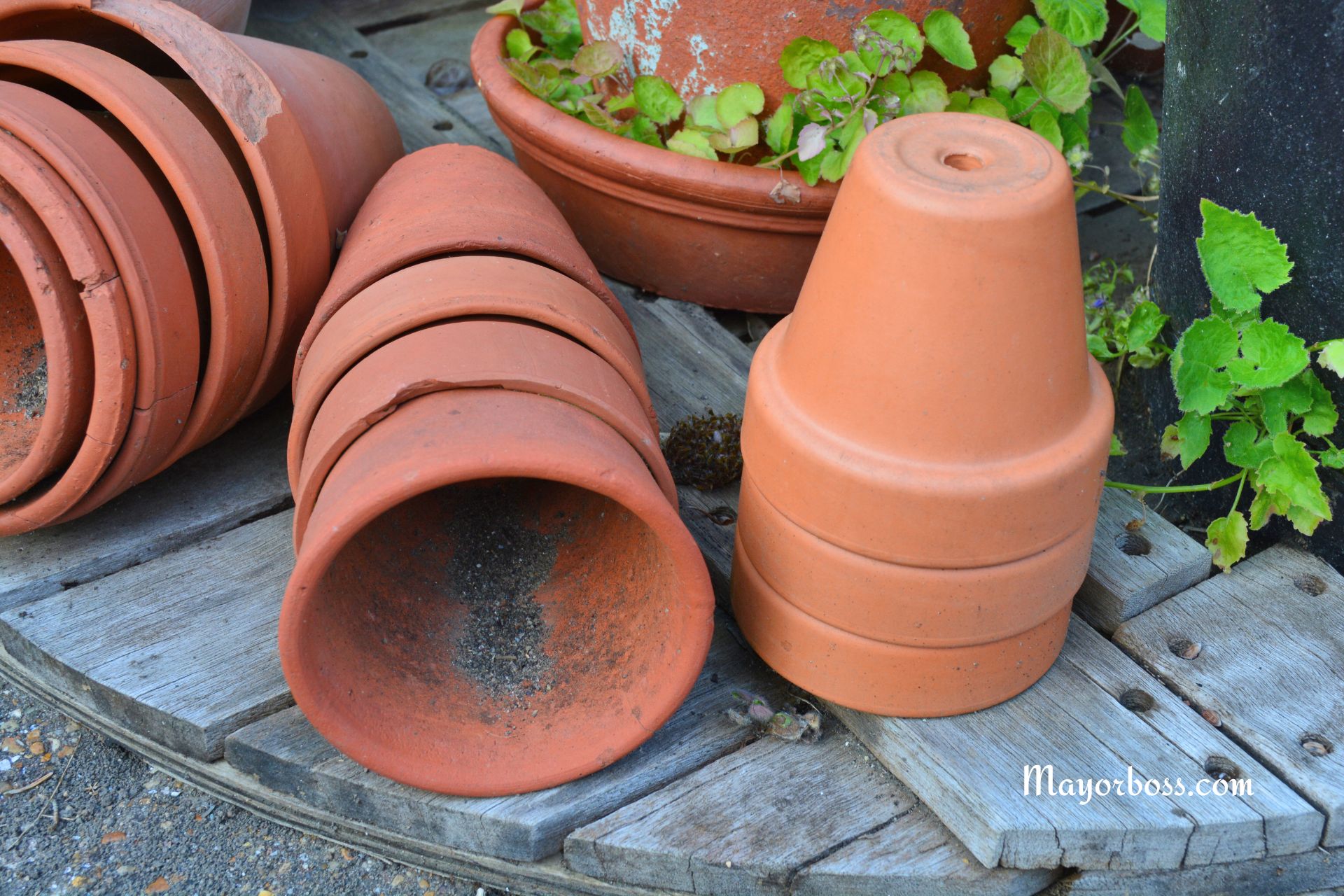10 Bedroom Plants That Release Oxygen While You Sleep
Looking for a natural way to boost your bedroom air quality? Certain houseplants, for instance, Snake Plant, Aloe Vera, and Golden Pothos, release oxygen at night, helping you breathe easier and sleep better. Here are ten oxygen-releasing plants you can safely keep in your bedroom.

Indoor air quality matters, especially where you rest. Many people think all plants release oxygen only during the day. In reality, some special plants continue to release oxygen at night. These plants use a process called CAM (Crassulacean Acid Metabolism) photosynthesis, making them ideal companions for your bedroom.
Better oxygen levels can support restful sleep, keep your mind clear, and promote overall health. Plus, indoor plants add a touch of calm and natural beauty to any space.
1. Snake Plant (Sansevieria trifasciata)
The snake plant, sometimes called mother-in-law’s tongue, is a superstar when it comes to nighttime oxygen release. It needs little care, thrives in low light, and helps remove toxins like formaldehyde from the air. Place it on your nightstand or a nearby shelf.
2. Aloe Vera
Aloe vera is known for its soothing gel, but it also produces oxygen at night. It removes toxins such as formaldehyde and benzene. This succulent doesn’t need much water and enjoys bright, indirect sunlight. Aloe vera is also great for purifying the air.
3. Peace Lily (Spathiphyllum)
Peace lilies not only release oxygen at night but also help filter common indoor toxins like formaldehyde, benzene, carbon monoxide, and xylene. In fact, peace lilies was featured in a NASA study on plants as one of the most suitable plants that purify indoor air. Their lush green leaves and occasional white flowers make them attractive bedroom plants. Keep them in moderate light and water them regularly.
4. Areca Palm (Dypsis lutescens)
The areca palm is often called a natural humidifier. It releases oxygen while you sleep and adds a tropical vibe to your room. Place this palm in a bright corner, and water when the soil feels dry.
5. Gerbera Daisy (Gerbera jamesonii)
Most flowering plants don’t release oxygen at night, but the gerbera daisy is different. It’s both decorative and beneficial for your bedroom air. Gerberas need lots of light, so place them near a window.
6. Orchids (Phalaenopsis and others)
Many orchids use CAM photosynthesis and give off oxygen at night, according to the American Orchid Society. Their elegant flowers and slender leaves add a touch of luxury to any bedroom. Orchids like indirect light and light watering.
7. Spider Plant (Chlorophytum comosum)
The spider plant is easy to grow and hardy. It releases oxygen at night and helps clear out pollutants like carbon monoxide and xylene. Hang it or place it on a shelf for best results.
8. Neem Tree (Azadirachta indica)
Neem is less common as a houseplant, but it does well indoors and purifies air efficiently. It produces oxygen at night and is known for its natural antibacterial properties. Neem needs lots of sunlight, so it’s perfect for a sunny bedroom.
9. Pothos (Epipremnum aureum)
Pothos is a trailing plant that releases oxygen and cleans the air. It’s forgiving, needs little attention, and can grow even in low-light rooms. Its heart-shaped leaves look beautiful in hanging baskets or pots.
10. Christmas Cactus (Schlumbergera)
Unlike many cacti, the Christmas cactus releases oxygen at night and enjoys indirect light. Its bright pink or red blooms add color to your sleep space. Water only when the soil is dry.
How to Care for Bedroom Plants
Caring for indoor plants doesn’t have to be complicated. Here are a few basic tips:
- Light: Most oxygen-releasing plants thrive in indirect sunlight. If your room is dark, consider rotating plants or using a grow light.
- Water: Let the soil dry out slightly between waterings. Overwatering can harm roots.
- Humidity: Some plants, like the peace lily and areca palm, enjoy higher humidity. You can mist them or place a tray of water nearby.
- Clean leaves: Wipe leaves with a damp cloth every few weeks to keep them dust-free.
The Benefits Go Beyond Oxygen
Adding plants to your bedroom does more than just boost oxygen. Plants can:
- Reduce stress and create a calming atmosphere.
- Absorb toxins and improve air quality.
- Add life, color, and style to your living space.
Frequently Asked Questions
1. Do all plants release oxygen at night?
No, most plants release oxygen during the day. Only certain plants, such as those listed above, use a process that releases oxygen at night.
2. Is it safe to have plants in the bedroom?
Yes, it is safe. Oxygen-releasing plants can even improve air quality and support restful sleep.
3. How many plants should I keep in my bedroom?
A few small to medium plants are enough for most rooms. Too many may make the space feel crowded.
4. Can plants cause mold or allergies?
If you overwater your plants, excess moisture can encourage mold. Use well-draining pots, water only when needed, and keep leaves dry to prevent this problem.
5. Which plant is the easiest to care for?
The snake plant and pothos are among the easiest. Both require minimal watering and can thrive in low light.






